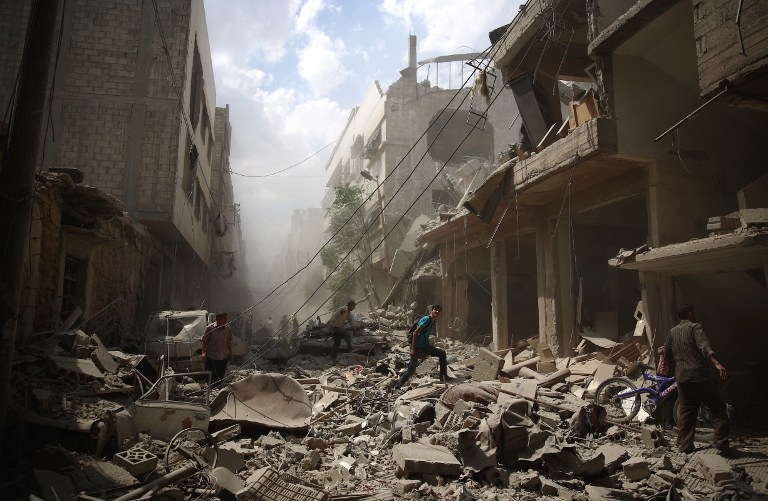Islamic State moves closer than ever to centre of Damascus

The Islamic State group fought Syrian rebel forces in a Damascus neighbourhood on Monday, bringing the militants closer than ever to the centre of the capital, a monitoring group said.
IS militants fought street battles against rebels in Asali, part of the capital's southern Qadam district, after seizing two streets in the neighbourhood over the weekend, the Syrian Observatory for Human Rights said.
Most of the clashes took place between IS and the Islamic Union of Ajnad al-Sham, a coalition of Islamist rebel groups based in Damascus, though IS also clashed with Jaish al-Islam in the Hajr Aswad neighbourhood.
Abdurahman Harkoush, a Syrian journalist close to rebel sources, told Middle East Eye that IS was in control of Asali district and that fighting was on-going.
"IS presence was restricted to Al-Hajar Al-Aswad district, but it invaded Yarmouk camp in May and took parts of it," he said. "A few days ago it took Asali."
"This is the closest IS has ever been to the heart of Damascus," Observatory head Rami Abdel Rahman said.
He said the militants had advanced from the adjacent Al-Hajar Al-Aswad neighbourhood, where they have been based since July 2014.
A Syrian military official confirmed the clashes and said he was "very happy that they are fighting".
"But we are ready to react if they try to advance into government-held territory," the official told AFP.
According to the Observatory, opposition-held Qadam has been relatively quiet since a truce between rebel groups and government forces there a year ago.
It said fighting in the district on Sunday left 15 fighters dead, but it could not specify how many were from IS and how many were rebels.
Abdel Rahman said the "fierce street battles" had forced civilians to flee the area.
Thaer Midani, an opposition activist based in Damascus, said the operation by IS was primarily a revenge attack against the Islamic Union.
"I have studied the Qadam assault, it is done with light arms and was a commando style op, to teach the union a lesson, after the latter kidnapped an IS member accusing him of trying to assassinate one of the union's leaders in Qadam," he told Middle East Eye.
"They will however, I reckon, take over several buildings and try to maintain them, as to erode the union's control of this important suburb."
He added that he did not believe that the Assad government faced an immediate threat from the IS advances - but said that they could prove crucial in future.
"IS today is in control of about half of Qadam," he said. "Qadam used to be a suburb of Damascus in the 60s. But today, it is fully interconnected/integrated."
"If we must be precise, they're today 1km from the official old Damascus border, which is the Midan neighbourhood."
Since its expulsion from the Eastern Ghouta suburb of Damascus last year, IS has used Al-Hajar Al-Aswad as a base for attacks on the capital.
From there, it tried to seize the Yarmouk Palestinian refugee camp in April, but was pushed back.
That same month, IS kidnapped two opposition fighters from Qadam and beheaded them in Al-Hajar Al-Aswad.
"ISIS is trying to take all liberated districts in south Damascus," said Harkoush.
"This will strengthen the regime. Unlike the rebels, IS has no public or international acceptance."
Middle East Eye propose une couverture et une analyse indépendantes et incomparables du Moyen-Orient, de l’Afrique du Nord et d’autres régions du monde. Pour en savoir plus sur la reprise de ce contenu et les frais qui s’appliquent, veuillez remplir ce formulaire [en anglais]. Pour en savoir plus sur MEE, cliquez ici [en anglais].




